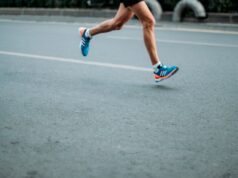
Jessica K Stewart (University of California, Los Angeles, Los Angeles, USA) shares what is currently known about reproductive outcomes following uterine artery embolization (UAE) through recent exemplar studies.
Understanding the impact that UAE for the treatment of symptomatic uterine fibroids may have on future reproductive outcomes is essential in helping patients choose a treatment that aligns with their goals. Though data regarding these outcomes is limited, several studies have provided information that might be useful in counselling patients considering UAE who have not yet completed their families.
A randomised controlled trial (RCT) by Maskova J Mara (Charles University, Prague, Czech Republic) et al compared reproductive outcomes between women undergoing myomectomy or UAE for uterine fibroids.1 In this study, more women undergoing myomectomy attempted to conceive compared to those undergoing UAE (40 vs. 26). There were significant differences in reproductive outcomes in favour of myomectomy, including a pregnancy rate of 78% vs. 50%, a delivery rate of 48% vs. 19%, and an abortion rate of 64% vs. 23%. This study was limited by small numbers, follow-up time, loss to follow-up, potential lack of generalisability, and lack of information about any fertility treatments utilised. The randomised trial of treating fibroids with embolization or myomectomy to measure the effect on quality of life (FEMME), led by Isaac Manyonda (St George’s University Hospital, London, UK), included reproductive outcomes as a secondary endpoint and found a pregnancy rate of 15% after UAE vs. 6% after myomectomy, but was also limited by small sample size.2 These conflicting RCT results underscore the need for additional investigation of the factors impacting reproductive outcomes.
One interesting recent study focused on ovarian function after UAE, and the impact that protective coiling might have on pregnancy rates.Their results found that 108 of 398 patients undergoing UAE had a “dangerous utero-ovarian anastomosis”, of which 33 underwent protective coil embolization. In patients desiring pregnancy, this occurred at a rate of 0.95 with ovarian protection versus 0.61 without ovarian protection (p=0.001), and remained significant when adjusting for age.3 Another study found that of five out of six women with increased follicle-stimulating hormone (FSH) levels after UAE had type IB or III utero-ovarian anastomoses, while none of the 21 women undergoing protective coiling for these anastomoses developed ovarian failure.4 These studies suggest that changes in technique could mitigate effects of UAE on ovarian function, which may impact fertility.
There are several challenges in attempting to design RCTs or large registry to evaluate reproductive outcomes in patients undergoing UAE. Enrolment is unlikely to be achievable, given that most women seeking pregnancy are counselled to undergo myomectomy based on the existing, low-quality data. Alternative approaches to studying reproductive outcomes should be considered in the future, such as studies of proxy metrics of fertility that could provide information to patients and physicians that would be valuable in shared medical decision making.
References:
- Mara, Maskova J, Fucikova Z et al. Midterm clinical and first reproductive results of a randomized controlled trial comparing uterine fibroid embolization and myomectomy. Cardiovascular and Interventional Radiology. 2008 Jan;31:73-85.
- Daniels J, Middleton LJ et al. Uterine artery embolization or myomectomy for women with uterine fibroids: Four-year follow-up of a randomised controlled trial. European J Obstet & Gynecol and Reproductive Biology: X. 2022 Jan 1;13:100139.
- Serres-Cousine O, Kuijper FM et al. Clinical investigation of fertility after uterine artery embolization. Am J Obstet Gynecol. 2021 Oct;225(4):403.e1-403.e22. doi: 10.1016/j. ajog.2021.05.033. Epub 2021 May 29.
- Sheikh GT, Najafi A, et al. Angiographic Detection of Utero-Ovarian Anastomosis and Influence on Ovarian Function After Uterine Artery Embolization. Cardiovasc Intervent Radiol. 2020 Feb;43(2):231-237. doi:10.1007 s00270-019-02305-7. Epub 2019 Sep 17.
Jessica K Stewart is an assistant professor of interventional radiology at the University of California, Los Angeles, Los Angeles, USA.










